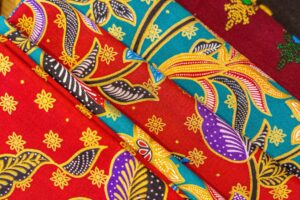 In the vibrant tapestry of Singapore’s rich cultural heritage, there is a compelling narrative woven through the threads of tradition, craftsmanship, and design. As the city-state hurtles towards modernity, there is a growing movement to rediscover and revitalize traditional Singaporean design, preserving the essence of the past in a rapidly evolving present.
In the vibrant tapestry of Singapore’s rich cultural heritage, there is a compelling narrative woven through the threads of tradition, craftsmanship, and design. As the city-state hurtles towards modernity, there is a growing movement to rediscover and revitalize traditional Singaporean design, preserving the essence of the past in a rapidly evolving present.
In this article we will explore the resurgence of cultural heritage in Singaporean design, celebrating the unique blend of influences that have shaped the nation’s aesthetic identity.
Roots of Singaporean Design
 Singapore is renowned for its rich design landscape that is deeply ingrained in its multicultural heritage. The city-state has seamlessly blended Chinese, Malay, Indian, and Peranakan influences to create a unique design style that reflects the diverse identities of its inhabitants.
Singapore is renowned for its rich design landscape that is deeply ingrained in its multicultural heritage. The city-state has seamlessly blended Chinese, Malay, Indian, and Peranakan influences to create a unique design style that reflects the diverse identities of its inhabitants.
Traditional design elements such as intricate carvings, vibrant colors, and symbolic motifs have adorned homes and public spaces for generations, serving as a testament to the cultural harmony that exists in Singapore. These design elements embody the stories of the city’s communities coexisting in peaceful coexistence, creating a vibrant and colorful tapestry of art and culture.
Let’s take a look at how this has impacted the revival of cultural heritage.
Architectural Heritage
Singapore boasts a rich architectural legacy that serves as a testament to the city’s storied past. The city’s diverse range of buildings, from shophouses with their distinct facades to colonial-era structures, each bears witness to the city’s evolution and cultural heritage.
The revival of traditional architectural styles not only pays homage to the artistry and skill of yesteryears but also serves to seamlessly blend Singapore’s past with its contemporary urban landscape. Buildings reflect a city’s identity and history, beyond just bricks and mortar.
Peranakan Influence
 The Peranakan culture is a fascinating and intricate fusion of Chinese and Malay traditions that have had a significant influence on Singaporean design. Peranakan homes are known for their vibrant color schemes, intricate patterns in tiles, and ornate furniture, all of which reflect the rich cultural heritage of this unique community.
The Peranakan culture is a fascinating and intricate fusion of Chinese and Malay traditions that have had a significant influence on Singaporean design. Peranakan homes are known for their vibrant color schemes, intricate patterns in tiles, and ornate furniture, all of which reflect the rich cultural heritage of this unique community.
The current design revival has seen a resurgence of interest in Peranakan design elements, with contemporary spaces seamlessly incorporating these features to create a beautiful blend of nostalgia and modernity.
Handicrafts and Artistry
Traditional crafts and artisanal skills are experiencing a renaissance in Singapore. From traditional pottery and textile weaving to the intricate art of Chinese paper cutting, local artisans are reviving age-old techniques.
The revival of these practices is also adding a sense of authenticity to modern design as they are stunning and unique creations that highlight the rich cultural heritage of Singapore. The revival of these traditional crafts provides a glimpse into Singapore’s rich past while also fostering a sense of pride for its citizens.
Textiles and Fabrics
 The fascinating and intricate textures and fabrics that are used in traditional Singaporean attire, such as the sarong kebayas and the batik prints, have found a way to seamlessly blend with contemporary interior design. These textiles are well-known for their vibrant and colorful patterns that hold significant cultural value.
The fascinating and intricate textures and fabrics that are used in traditional Singaporean attire, such as the sarong kebayas and the batik prints, have found a way to seamlessly blend with contemporary interior design. These textiles are well-known for their vibrant and colorful patterns that hold significant cultural value.
They are now being repurposed in upholstery, drapery, and decor, adding a touch of heritage and cultural richness to modern living spaces. The intricate patterns and designs of these traditional fabrics are made even more captivating when used in contemporary design.
Culinary Design
In recent times, there has been a renewed interest in traditional design, and this trend has extended beyond just visual appeal. This can be seen in the use of traditional designs and materials, such as wood and ceramics, combined with contemporary elements and technology to create unique dining experiences.
By incorporating this trend, diners can savor the taste of traditional cuisine while also immersing themselves in the cultural significance of the food they consume.
Community-driven Initiatives
 The resurrection of traditional design owes much to the tireless efforts of community-led projects and initiatives. These projects bring together a diverse range of individuals, including designers, artisans, and local communities, to collaboratively work towards preserving cultural heritage.
The resurrection of traditional design owes much to the tireless efforts of community-led projects and initiatives. These projects bring together a diverse range of individuals, including designers, artisans, and local communities, to collaboratively work towards preserving cultural heritage.
Through their collective efforts, they are instilling a sense of ownership and pride in preserving the rich cultural legacy of their communities. These initiatives are also transforming public spaces, imbuing them with a sense of history and character, reflecting the unique stories that are woven into the fabric of the city’s cultural landscape.
Conclusion
In the bustling metropolis of Singapore, the revival of traditional design is not merely a nostalgic nod to the past but a conscious effort to weave cultural heritage into the fabric of the future. As contemporary designers embrace the richness of Singapore’s multicultural history, the resulting fusion of tradition and modernity creates spaces that tell stories, evoke emotions, and celebrate the timeless beauty of a nation’s design legacy.
Through this rediscovery, Singapore stands at the forefront of a global movement, showcasing how the preservation of cultural heritage can be seamlessly integrated into the dynamic tapestry of the modern world.
Ready to turn your dream home into reality? Book an appointment with E³.SPACE, and let us bring your vision to life.
